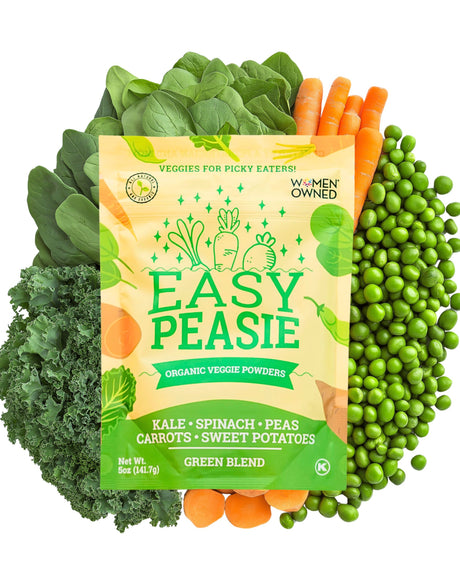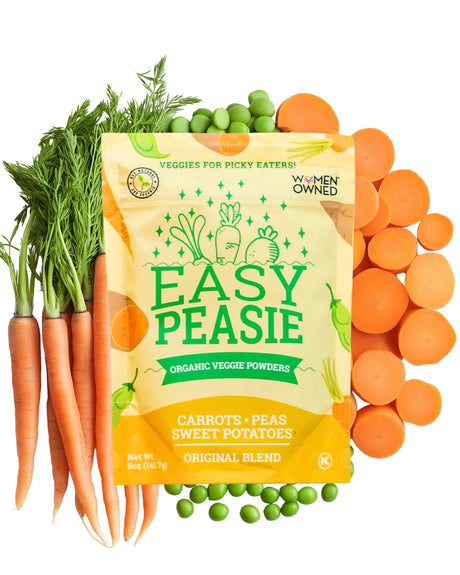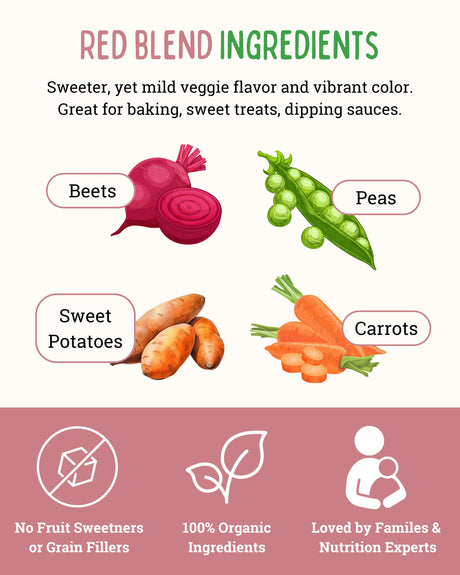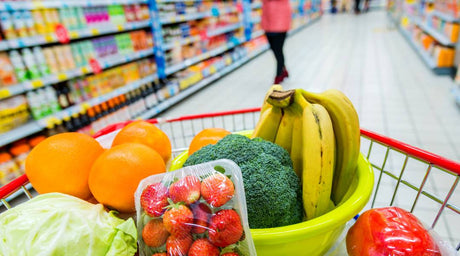The modern parenting landscape is evolving, with one of the most notable shifts being the rise in food allergies among children. Recent studies highlight a concerning uptick in the prevalence of food allergies, leading many to deem it a burgeoning public health issue. This surge not only intensifies the watchful eyes of parents at mealtime but also presents a culinary conundrum: how can parents ensure their children are receiving all the vital nutrients while navigating the minefield of potential allergens? It's a delicate dance between safeguarding against allergic reactions and offering a balanced, nutritious diet, a challenge that countless parents grapple with daily.
Understanding Food Allergies
At its core, a food allergy is the body's heightened immune response to certain foods, mistakenly identifying them as harmful invaders. When these foods, often innocuous to most, are consumed by someone with an allergy, the body triggers an immune reaction, which can manifest in a variety of symptoms ranging from mild rashes to severe anaphylactic reactions. For parents, it's crucial to recognize the most common culprits behind these allergic reactions in children. Topping the list are the "Big Eight" allergens: milk, eggs, peanuts, tree nuts (like almonds and walnuts), fish, shellfish, soy, and wheat. In recent years, sesame has also emerged as a growing concern, increasingly being acknowledged alongside these predominant allergens. Being aware of these common triggers is the first step in ensuring a safe dining environment for allergy-prone children.
When a child with a food allergy ingests a triggering food, the response can be swift and alarming. Symptoms can vary widely based on the individual and the severity of their allergy. For some, it might manifest as mild itching or hives on the skin, while others might experience more systemic reactions such as abdominal pain, diarrhea, or vomiting. Respiratory symptoms can include sneezing, coughing, nasal congestion, or even more severe signs like wheezing and shortness of breath. Perhaps the most daunting reaction to be aware of is anaphylaxis, a severe and potentially life-threatening reaction that can cause a rapid or weak pulse, a drop in blood pressure, and narrowing of the airways, leading to breathing difficulties. Immediate medical attention is paramount in such situations. As every child's reaction can differ, it's essential for parents and caregivers to be vigilant, recognizing these signs and seeking timely medical intervention when necessary.
Importance of Diagnosis and Professional Guidance
In the maze of food allergies, pinpointing the exact cause is not just a convenience—it's a necessity. Allergy tests, including skin prick tests and blood tests, play an instrumental role in identifying specific allergens. These diagnostic tools can help decode your child's adverse reactions, providing clarity and setting the foundation for a tailored dietary plan. Beyond diagnosis, consulting with a pediatrician or nutritionist is of paramount importance. These experts offer a wealth of knowledge, ensuring your child receives a balanced, nutritious diet while avoiding potential allergenic triggers. Furthermore, a pediatric nutritionist can suggest suitable alternatives for common allergens, ensuring your child doesn't miss out on essential nutrients. As parents navigate the challenging terrain of food allergies, a professional's guidance can act as their compass, steering them towards choices that prioritize both safety and nutrition.

Ensuring Nutritional Balance
When food allergies come into play, parents often grapple with the challenge of ensuring their child's diet remains nutrient-rich, even when omitting certain food groups. Thankfully, nature is bountiful, offering a variety of foods that can serve as nutritious stand-ins. For instance, if dairy is a no-go, calcium-rich alternatives like fortified plant-based milks or leafy greens can fill the gap. Similarly, for those steering clear of eggs, chia or flaxseed mixtures can be a great binding and nutritional substitute in many recipes.
The power of a food diary shouldn't be underestimated. Keeping track of what your child consumes, and any subsequent reactions, can be instrumental in identifying potential sensitivities and ensuring a well-rounded diet. Over time, this diary can serve as a helpful reference, guiding dietary choices and ensuring your little one's plate remains both safe and satisfying.
Meal Planning and Preparation
Crafting allergy-friendly meal plans might seem daunting at first, but with a dash of diligence and a sprinkle of creativity, it can become second nature. Start by centering your plans around naturally allergy-free foods, such as fruits, vegetables, lean meats, and certain grains. From there, expand your menu by exploring alternative ingredients; for instance, almond milk for dairy milk, or gluten-free flour for traditional wheat flour.
Safety in the kitchen is paramount, especially when catering to food allergies. Preventing cross-contamination is crucial. Always clean surfaces, utensils, and hands thoroughly before preparing an allergy-friendly meal. Separate cutting boards and designated cookware can further ensure that allergens don't inadvertently mix with allergy-free foods.
When shopping, make reading labels a non-negotiable habit. Manufacturers often include allergens in products where you'd least expect them. Words like 'hydrolyzed vegetable protein' might signal the presence of soy, while 'natural flavors' can sometimes indicate the inclusion of allergenic substances. Always be on the lookout for statements like "may contain traces of...", signaling that cross-contamination might have occurred during manufacturing. Over time, honing this detective-like scrutiny will make it easier to spot and sidestep hidden allergens, ensuring mealtime remains a joyful and stress-free experience for all.
Educating Your Child and Their Environment
Equipping your child with knowledge is one of the most potent defenses against potential allergenic reactions. As they grow, children should understand the nature of their allergies, the specific foods or ingredients they need to avoid, and the reasons behind these dietary restrictions. Making this education process engaging, using stories or interactive games, can help reinforce these lessons.
Beyond the household, it's essential to establish open lines of communication with schools, caregivers, and even your child's friends and their parents. Schools, in particular, should have a clear understanding of your child's dietary needs, possible reaction symptoms, and the necessary response in case of accidental exposure. Providing written documentation, including action plans and emergency contact numbers, is a prudent step.
Lastly, preparation is paramount. Role-playing potential scenarios at home where your child might come into contact with allergenic foods—like a friend's birthday party or a school outing—can help them confidently navigate real-life situations. This proactive approach not only ensures their safety but also empowers them to make informed choices independently, fostering resilience and self-assuredness in their food journey.
Handling Accidental Exposures
Accidental exposures to allergens can be a parent's worst nightmare, but swift and informed action can make all the difference. If you suspect your child has consumed a food they're allergic to, monitor for symptoms like hives, swelling, difficulty breathing, or stomach distress. Keeping a level head is essential; panicking can stress both you and the child, making the situation more challenging to manage.
Having the right medications within arm's reach is non-negotiable. Always carry prescribed antihistamines and, for severe allergies, an EpiPen. Administering these as directed by a healthcare professional can mitigate severe reactions. Familiarize yourself with the proper use of an EpiPen, as timely and correct administration is crucial.
However, it's vital to recognize that even after giving medication, the situation might not be entirely under control. If your child displays severe symptoms, especially respiratory distress or signs of anaphylaxis, call emergency services immediately or head straight to the nearest emergency room. Always better to err on the side of caution when it comes to allergies, as reactions can escalate unpredictably. Remember, safety first; and always consult with a healthcare professional after any allergic reaction to discuss and reassess management strategies.
Final Thoughts
Navigating the world of food allergies, especially when it concerns your child, often feels like walking a tightrope—maintaining a delicate balance between rigorous caution and ensuring wholesome nutrition. It's an undeniably challenging journey, but armed with the right knowledge, support, and resources, it becomes significantly more manageable. As parents, while our primary instinct is to protect our young ones from potential allergens, we must also equip them with a diet that fuels their growth and development. By staying informed, building a close rapport with healthcare professionals, and leveraging resources—be it through informative books, or support groups, parents can navigate this path more confidently. The goal is not just about averting allergens, but fostering an environment where children can thrive, both health-wise and in their relationship with food.













